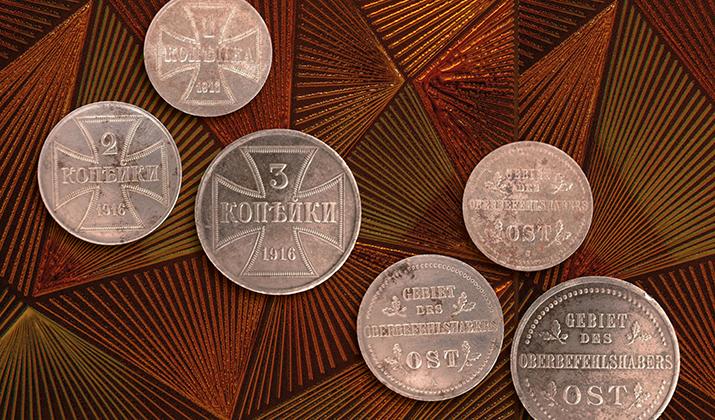Here's a new coin that pier2 invites you to discover: the Ober Ost coins.
 Ober Ost
Ober Ost Ober Ost is a German term used during the First World War. It’s an abbreviation of the German Oberbefehlshaber der gesamten Deutschen Streitkräfte im Osten, meaning “Supreme Commander of all German forces in the East”.
In practice, this title was used to designate the staff of the high command of the German army’s military occupation authority, responsible for administering the territories of the Russian Empire conquered on the Eastern Front between June 6, 1914 and December 26, 1918. A military order of June 7, 1916 gave the Ober Ost autonomy over economic matters, jurisdiction, customs duties and its own currency.)
The “OST” trigram is found on three iron coins minted in the Berlin and Hamburg mints in 1916 for use in the areas occupied by the German army, including large parts of modern Latvia and Lithuania, as well as smaller parts of Poland and Belarus.
– The obverse of these coins bears the legend: “GEBIET DES OBERBEFEHLSHABERS OST”, translated into French as “Région du commandant en chef – Est”.
– On the reverse, the face value in Cyrillic script within an iron cross: 1 kopeck 1916, 2 kopecks 1916 and 3 kopecks 1916. The Iron Cross (German: Eisernes Kreuz) is a military wartime decoration.
From a numismatic point of view, these three military coins bear witness to the means used to administer newly conquered territories. And once again, coinage plays an important role.
As explained at the beginning of this article, these coins are made of iron, which is sensitive to corrosion. Collectors are struggling to find them in good condition, despite the fact that several million of them are produced.
Caution: There are many counterfeit or replica coins, so be careful!





